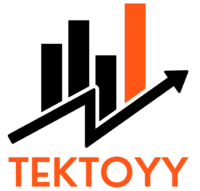When you need a loan, your first thought is probably to go to a bank or a credit union. But what if there was another way? A method that connects people who want to borrow money directly with people who want to lend money, cutting out the middleman entirely. This is the world of Peer-to-Peer (P2P) lending.
P2P lending is an innovative financial system that uses online platforms to match borrowers with individual investors. It’s a modern, digital alternative to traditional lending that has grown in popularity for both borrowers seeking better rates and investors looking for new opportunities.
This comprehensive guide will explain exactly how P2P lending works, the benefits for both sides of the transaction, and what you need to know to get started.
How Peer-to-Peer Lending Platforms Work: A Digital Revolution in Finance

At its core, P2P lending is simple. An online platform acts as a marketplace. On one side, you have individuals seeking loans for various purposes, such as debt consolidation, home improvements, or starting a business. On the other side, you have individual investors looking to earn a return on their money by lending it out.
The Borrowing Process: From Application to Funds
- Create a Profile and Submit an Application: As a borrower, you’ll start by creating a profile on a P2P platform like LendingClub or Prosper. You’ll submit a loan application that includes details about your financial history, the purpose of the loan, and the amount you want to borrow.
- The Platform’s Screening Process: The platform doesn’t just put your request out there. It performs its own credit check, verifying your identity, income, and credit score. Based on this information, the platform assigns you a credit grade (e.g., A, B, C) and a corresponding interest rate. This transparency helps investors assess risk.
- Lenders Fund Your Loan: Once your application is approved and listed, individual investors can browse the loan listings. They can choose to invest as little as $25 in your loan. The platform makes this possible by “slicing” the loan into small pieces, allowing multiple investors to fund a single loan. This diversification is a key part of the P2P model.
- Receive Your Funds and Repay: Once the loan is fully funded, the platform sends the money to you, minus any origination fees. You then begin making monthly payments to the platform, which distributes the principal and interest back to the investors who funded your loan.
The Investor’s Perspective: Earning Returns on Your Money
- Fund Your Account and Browse Listings: As an investor, you’ll deposit money into your platform account. You can then browse a wide range of loan listings, each with a different credit grade, interest rate, and loan purpose.
- Evaluate Risk and Return: This is where you do your due diligence. You can review the borrower’s credit profile (anonymously), their credit score range, and the loan’s purpose. The higher the risk (e.g., a borrower with a lower credit score), the higher the potential interest rate, and therefore the higher the potential return.
- Build a Diversified Portfolio: The key to investing in P2P loans is diversification. Instead of putting all your money into one loan, you can spread small amounts (e.g., $25) across dozens or even hundreds of different loans. This way, if one borrower defaults, the impact on your overall portfolio is minimal.
- Earn Passive Income: You simply wait for the monthly payments to roll in. The platform handles all the servicing, including collecting payments and distributing the funds back to you. You are essentially earning passive income from the interest on the loans you helped fund.
Key Advantages of Peer-to-Peer Lending for Both Sides

P2P lending has disrupted the traditional financial market because it offers compelling advantages for both borrowers and investors.
Benefits for Borrowers: Access to Better Rates and Simpler Processes
- Potentially Lower Interest Rates: Because P2P platforms have lower operating costs than traditional banks (no physical branches), they can often offer lower interest rates to borrowers, especially those with good credit.
- More Flexible and Accessible: P2P platforms may be more willing to lend to individuals who don’t fit the strict criteria of a traditional bank. This makes it a viable option for those with less-than-perfect credit or a short credit history.
- Simple, Online Application: The entire process is done online, from application to funding, which is much faster and more convenient than a traditional bank loan application.
- Fixed Interest Rates and Terms: Most P2P loans have fixed interest rates and terms, so you know exactly what your payments will be and when the loan will be paid off.
Benefits for Investors: Higher Returns and Portfolio Diversification
- Attractive Returns: P2P lending can offer higher returns than traditional savings accounts or bonds, especially in a low-interest-rate environment.
- Diversification: It provides a new asset class for investors, allowing them to diversify their portfolio beyond stocks, bonds, and real estate. The ability to invest small amounts in many different loans reduces risk.
- Passive Income Stream: Once you’ve set up your investments, the platform handles the rest, creating a steady stream of passive income from monthly loan repayments.
The Risks and Downsides of P2P Lending: What to Watch Out For
Like any investment or loan, P2P lending comes with its own set of risks. It’s crucial to understand these before diving in.
Risks for Investors: The Possibility of Borrower Default
- Risk of Default: This is the primary risk for investors. If a borrower stops making payments, you could lose some or all of your invested principal and future interest. While platforms have collections departments, there is no guarantee you will recoup your money. This is why diversification is so critical.
- Platform Risk: The platform itself could fail or go out of business. While regulations are in place to protect investors in such events, it is a risk to consider.
- Not FDIC-Insured: Unlike money in a traditional bank account, P2P investments are not insured by the Federal Deposit Insurance Corporation (FDIC). Your money is at risk.
Disadvantages for Borrowers: Higher Rates for Lower Credit Scores
- Higher Rates for High-Risk Borrowers: While P2P lending can be more accessible, borrowers with low credit scores may be charged very high interest rates to compensate for the risk. These rates could be as high as or even higher than those on a credit card.
- Origination Fees: Platforms charge an origination fee, which is a percentage of the loan amount, to cover their costs. This fee is taken out of the loan before you receive the funds, so the amount you receive is less than what you borrowed.
- Strict Repayment Rules: There is little room for flexibility. If you miss a payment, it can negatively impact your credit score and you may incur late fees.
P2P Lending vs. Traditional Bank Loans: A Head-to-Head Comparison
| Feature | Peer-to-Peer (P2P) Lending | Traditional Bank Loan |
| Source of Funds | Individual investors on a platform | The bank’s funds |
| Interest Rates | Often lower for good credit, higher for poor credit | Can vary, often tied to bank’s internal rates |
| Application Process | Entirely online, fast and convenient | Often requires in-person visits and paperwork |
| Accessibility | More flexible for those with unique financial profiles | Strict credit and income requirements |
| Fees | Origination fees, late payment fees | Origination fees, closing costs, administrative fees |
| Funding Time | Can be very quick, sometimes in a few days | Can take weeks to process |
Tips for Navigating the P2P Lending World as a Borrower or Investor
For Borrowers:
- Improve Your Credit Score First: Before applying, take steps to improve your credit score. This will help you qualify for a better credit grade and a lower interest rate.
- Compare Platforms: Don’t just go with the first platform you find. Compare interest rates, fees, and loan terms across different P2P lenders to find the best deal.
- Read the Fine Print: Understand all the fees, including origination fees and any prepayment penalties.
For Investors:
- Start Small and Diversify: Begin with a small amount of money and spread it across a large number of loans. This is the single most important rule for managing risk.
- Don’t Overlook Risk: Higher interest rates mean higher risk. Be realistic about the possibility of defaults and factor them into your expected returns.
- Understand Your Tax Obligations: The interest you earn on P2P loans is considered taxable income. Consult with a tax professional to understand your obligations.
A Modern Alternative for a Modern World

Peer-to-Peer lending is more than just a passing trend; it’s a legitimate, growing part of the financial landscape. For borrowers, it offers a streamlined, often more affordable alternative to traditional loans. For investors, it provides a unique way to generate passive income and diversify a portfolio.
While it has its risks, by understanding how the system works and approaching it with a well-thought-out strategy, you can take advantage of the benefits it offers. Whether you’re looking to consolidate debt or grow your wealth, P2P lending is an option worth exploring.







